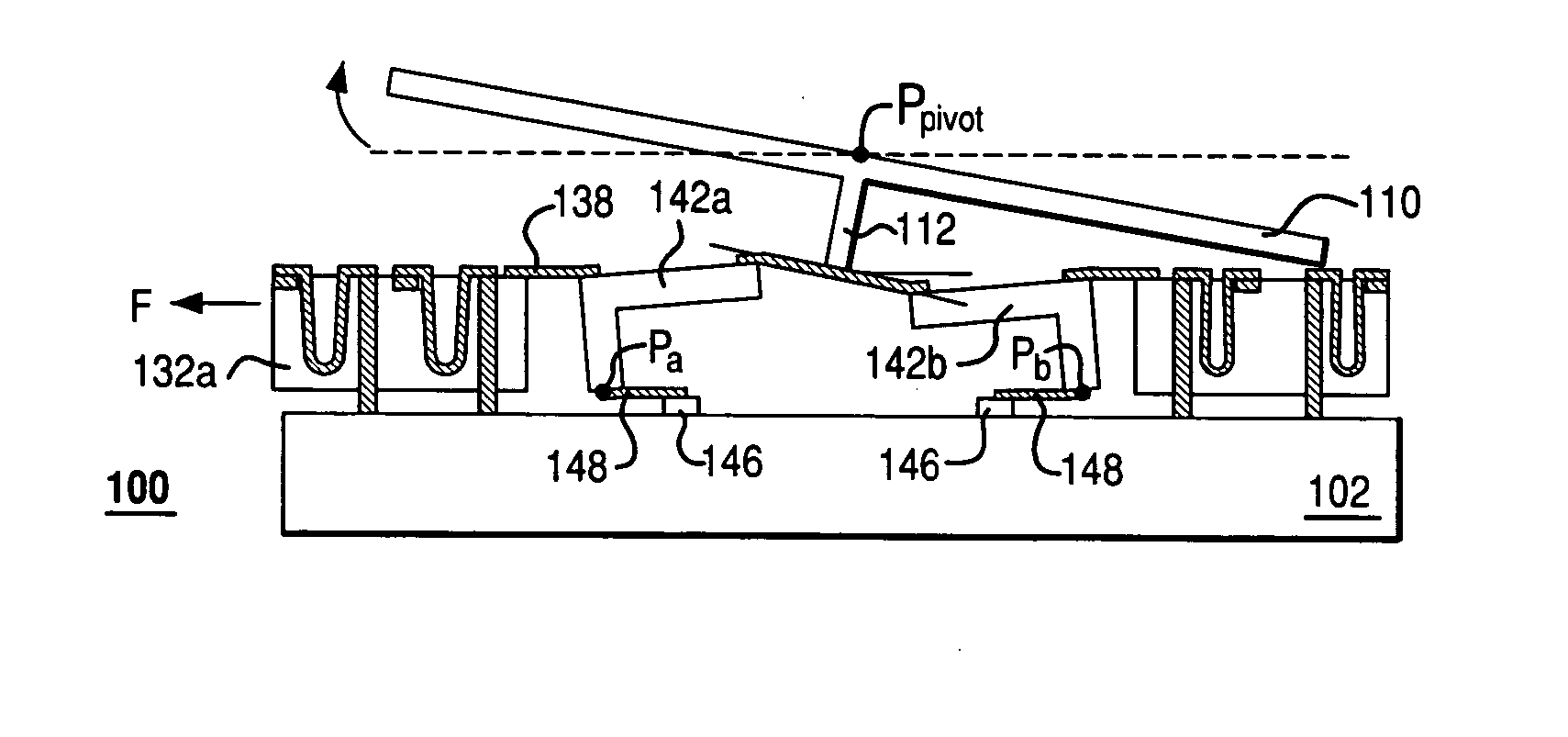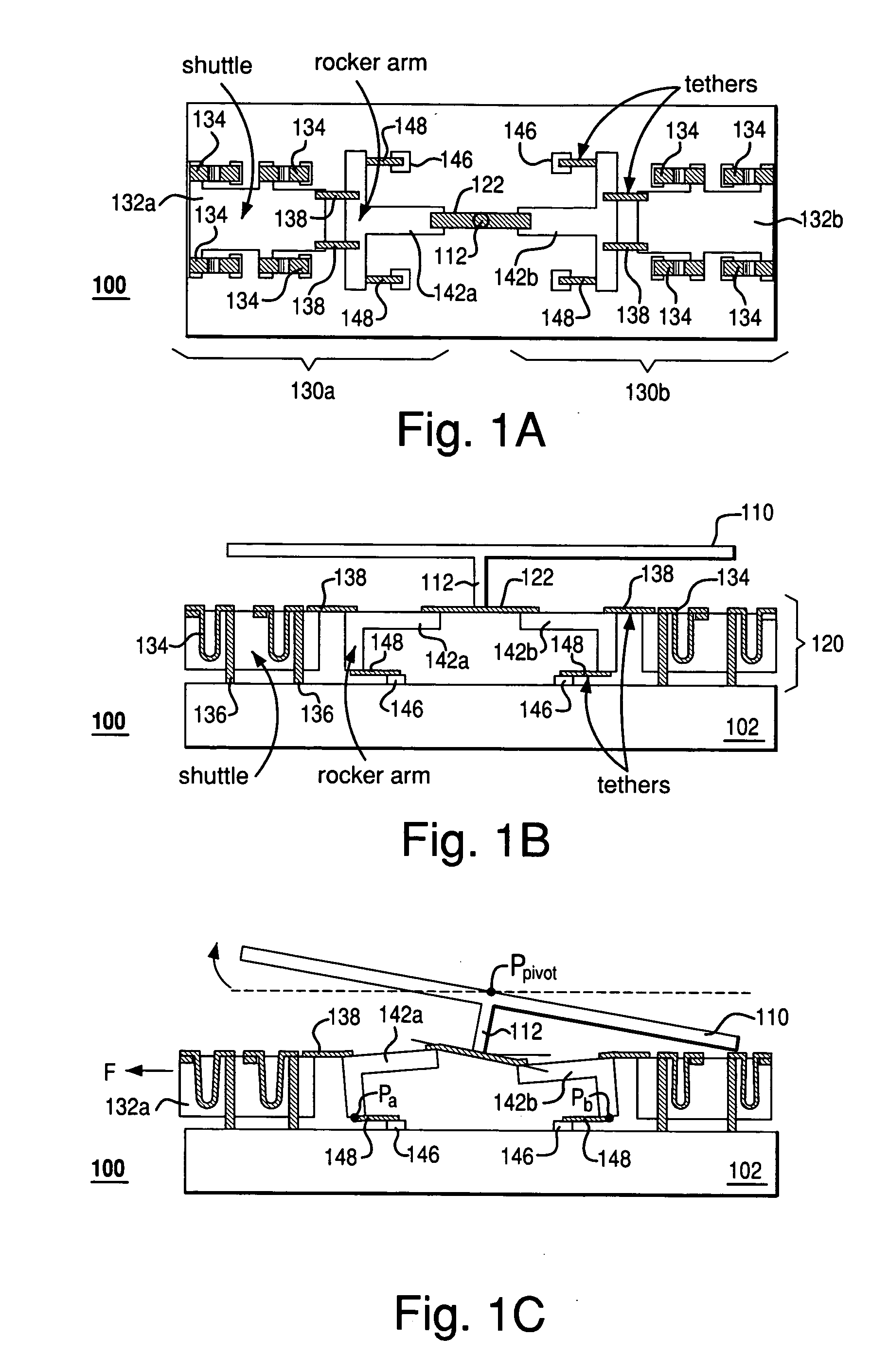Rocker-arm actuator for a segmented mirror
a rocker-arm actuator and mirror technology, applied in the field of microelectromechanical systems, can solve the problems of reducing the fill factor, difficult or even impossible to meet, etc., and achieve the effect of reducing the potential physical interference and large fill factor
- Summary
- Abstract
- Description
- Claims
- Application Information
AI Technical Summary
Benefits of technology
Problems solved by technology
Method used
Image
Examples
Embodiment Construction
[0018] Reference herein to “one embodiment” or “an embodiment” means that a particular feature, structure, or characteristic described in connection with the embodiment can be included in at least one embodiment of the invention. The appearances of the phrase “in one embodiment” in various places in the specification are not necessarily all referring to the same embodiment, nor are separate or alternative embodiments mutually exclusive of other embodiments.
[0019] FIGS. 1A-C show top and side views of a MEMS device 100 according to one embodiment of the invention. More specifically, FIG. 1A shows a cutout top view of device 100, and FIGS. 1B-C show side views of the device with its movable plate 110 in two different rest positions. Movable plate 110 in device 100 is mounted on a motion actuator 120, which is supported on a substrate 102. In one embodiment, plate 110 has a reflective top surface and can serve as a segment of a segmented mirror. Actuator 120 has two actuator portions ...
PUM
 Login to View More
Login to View More Abstract
Description
Claims
Application Information
 Login to View More
Login to View More - R&D
- Intellectual Property
- Life Sciences
- Materials
- Tech Scout
- Unparalleled Data Quality
- Higher Quality Content
- 60% Fewer Hallucinations
Browse by: Latest US Patents, China's latest patents, Technical Efficacy Thesaurus, Application Domain, Technology Topic, Popular Technical Reports.
© 2025 PatSnap. All rights reserved.Legal|Privacy policy|Modern Slavery Act Transparency Statement|Sitemap|About US| Contact US: help@patsnap.com



